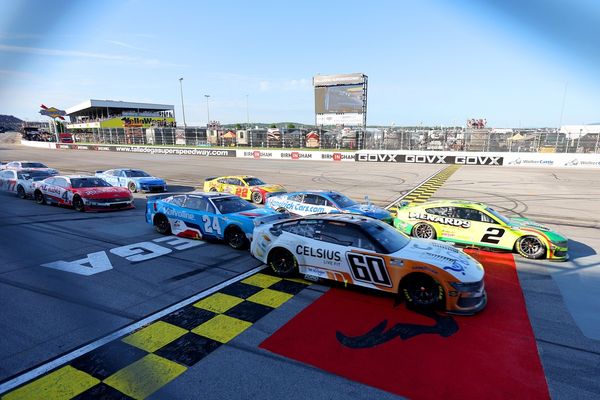Hobart's four urban councils believe there is enough land available for 30,000 more dwellings in 30 years within existing city boundaries to house 60,000 more people, but developers are far from convinced.
The councils of Hobart, Glenorchy, Clarence and Kingborough have approved the 30-year Greater Hobart Plan that predicts a rapid increase in townhouses, villas, apartment buildings up to eight storeys high and granny flats.
They would be built on infill land — areas that are either vacant or under-utilised, like subdividing small residential blocks, or adding housing above businesses.
But the plan has a few assumptions:
- First, Greater Hobart has added about 700 dwellings per year over the past 10 years — this would need to increase to 1,000, and requires a reversal of trends that see the vast majority of new housing close to the city's fringe
- Second, the city would need to increase its 50:50 split between infill and greenfield development — undeveloped land with no structures — to a 70:30 proportion. But developers claim this target is already being missed by some margin
- Third, the plan assumes planning laws would allow this scale of increase to occur and it would be accepted by local communities
- And fourth, the plan says Hobart does not need substantial changes to its road and car parking infrastructure, that more people will be living closer to their commute destination, and there'll be an increase in the use of public transport, cycling and walking
When it comes to health and education, that was seen as a matter for the state and federal governments.
No city border expansion?
The plan does not see a need for Hobart's urban growth boundary to be expanded — and Lord Mayor Anna Reynolds agrees.
She said the four council areas already had "a lot of land" that could be better utilised for housing, and the city should avoid urban sprawl at all costs.
"The current urban growth boundary that was set some years ago provides plenty of room for these projected increases in population, but it does require us to open a few small new areas of greenfield development," Cr Reynolds said.
"That includes places like Droughty Point on the eastern shore."
While the Hobart Showground was seen as essential for adding housing, the relocation of the University of Tasmania campus from Sandy Bay was not included.
Cr Reynolds said the "mid-town area" — a collection of blocks surrounding the CBD — would be a key focus for a rapid increase in medium-density housing, along with suburbs like Lenah Valley and New Town.
"It does assume that we will see more compact development, so people will live closer to what they need to get to, and we're not necessarily presuming that there'll be a massive increase in vehicles to come with this," she said.
But the decision not to expand the urban growth boundary caused concern among developers.
JAC Group managing director Dean Cocker believed the councils should not rule out allowing more greenfield development beyond the boundaries, including a proposal for a Whitewater Park subdivision on Kingston's western fringe.
He said this was just one example of land beyond the boundary that could be considered.
Without these kinds of developments, Mr Cocker doubted the housing target could be achieved.
"I can say with confidence that the 70 per cent infill target will not be achieved and still deliver the total number of homes required. It just won't happen," Mr Cocker said.
'Give locals the quality of life they deserve'
The increasing focus on "active transport" (non-motorised), a "compact" Hobart and developing medium-density housing along the northern suburbs transit corridor — a long-debated strip of disused land alongside a former passenger rail line — was supported by the Australian Institute of Architects.
Tasmanian chapter president Stuart Tanner said they supported the ambition to increase infill and not expand the urban growth boundary.
"We need quality development to maintain and enhance the natural and built environment that makes our city so special and attractive to visitors, while giving locals the quality of life they deserve," he said.
"This requires a sensible, united approach with effective strategies, sound research and the expertise of local industry specialists."
While the plan does not highlight specific changes to planning laws that could be needed to scale up infill and medium-density development, state development minister Guy Barnett said changes could be needed.
An implementation plan still needs to be developed by the four councils, relying on the support of the state government, which will release its own 20-year housing strategy next year.
Mr Barnett said Tasmania "needs to do things differently" when it comes to housing.
"Obviously there may need to be changes in terms of planning and zoning and that's a matter for local government. We'll be working together to get the job done and ensure we create a liveable environment that is sustainable," he said.
"We'll maintain all the good things we love about Hobart, but we also make sure there are sustainable living arrangements into the future."
Others are calling for Tasmania's residential standards to be improved before a rapid increase in housing occurs.
Planning Matters Alliance Tasmania state coordinator Sophie Underwood said the standards did not allow for the consideration of an area's existing values, developments did not need to use or add natural assets, neighbours can be overshadowed and north-facing roofs – which maximise energy efficiency – are not required.
"We are concerned that we're having this growth that will potentially impact values without having the best planning standards. There's an opportunity now for those to be improved," she said.
In Tasmania, neighbours are not informed of a development next door on all occasions unless it exceeds 8.5 metres in height or there's the potential for overlooking, it has insufficient car parking, is within a boundary setback or has certain other discretionary uses.







